Blackthorn blossom arrives with a shiver at winter’s end when a cruel north-east wind blows – so the legends say, but then folklore has never seen the best in blackthorn.
It is true enough that the hills seem dozy, with trees bare and sombre beside meadows bereft of wildflowers. And there, suddenly, impossibly, spring’s pioneer splashes brilliant white paint over hedgerows with such impatience that its own leaves miss the show.
This understated shrub, found through the British countryside, has four distinct stages. In spring it blossoms; in summer it comes in to leaf; in autumn its branches fill with sloe berries; in winter, without its blossom, leaves or fruit, blackthorn's thin hard bones are revealed.
Find out more about blackthorn with our species guide.
Spring blossom guide
Learn how to identify spring blossom found in the UK and best places to spot blossom with our ID guide.
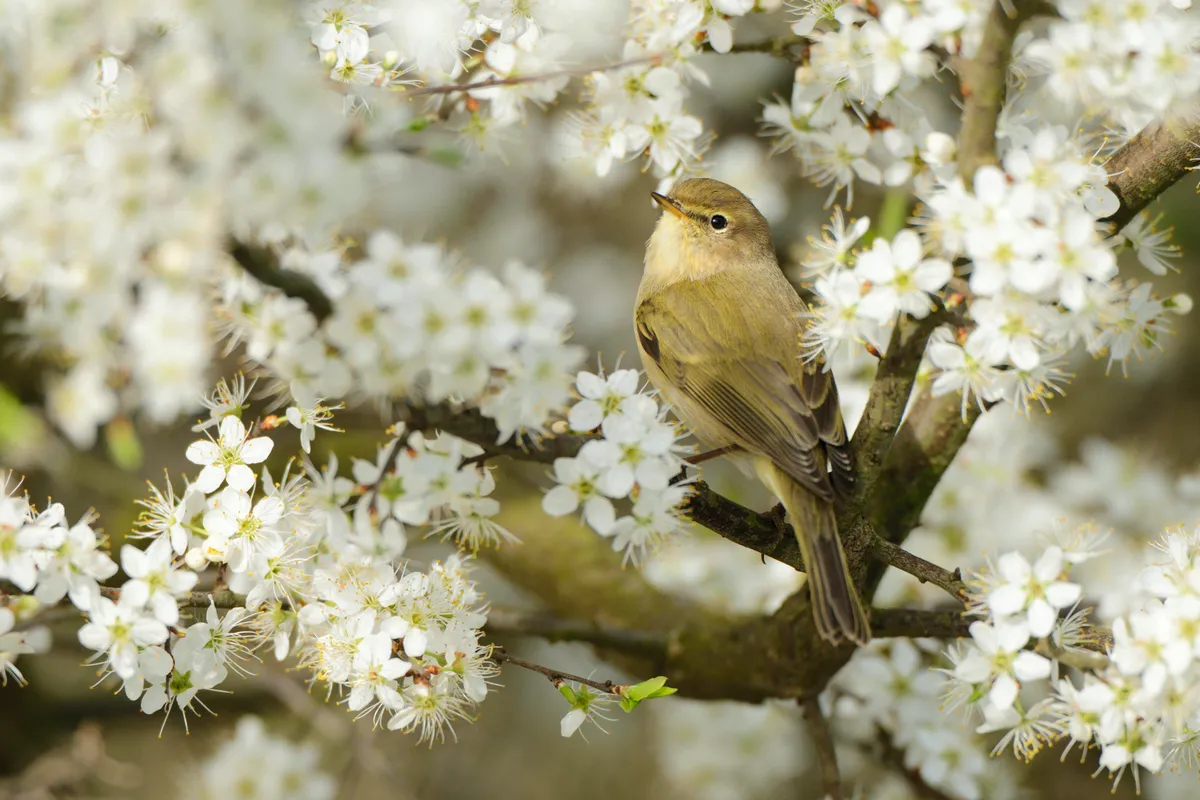
What is blackthorn?
Blackthorn’s scientific name is Prunus spinosa; the genus Prunus is made up of 430 species of stone fruits. It may look roughly like an unpolished version of hawthorn, but blackthorn’s true cousins are world famous: apricots, almonds and cherries.
Blackthorn was long thought to be an ancestor of the cultivated European plum but genetic analysis has questioned this. Its relationship to the damson, which blackthorn strongly resembles, remains unclear. Prunus species share their fruit and showy blossom across the northern hemisphere, from desert plums in California to bird cherries in Japan. Blackthorn itself is found from north-west Africa through Europe to western Asia, and is widely cultivated in China. It has been introduced to North America and New Zealand.
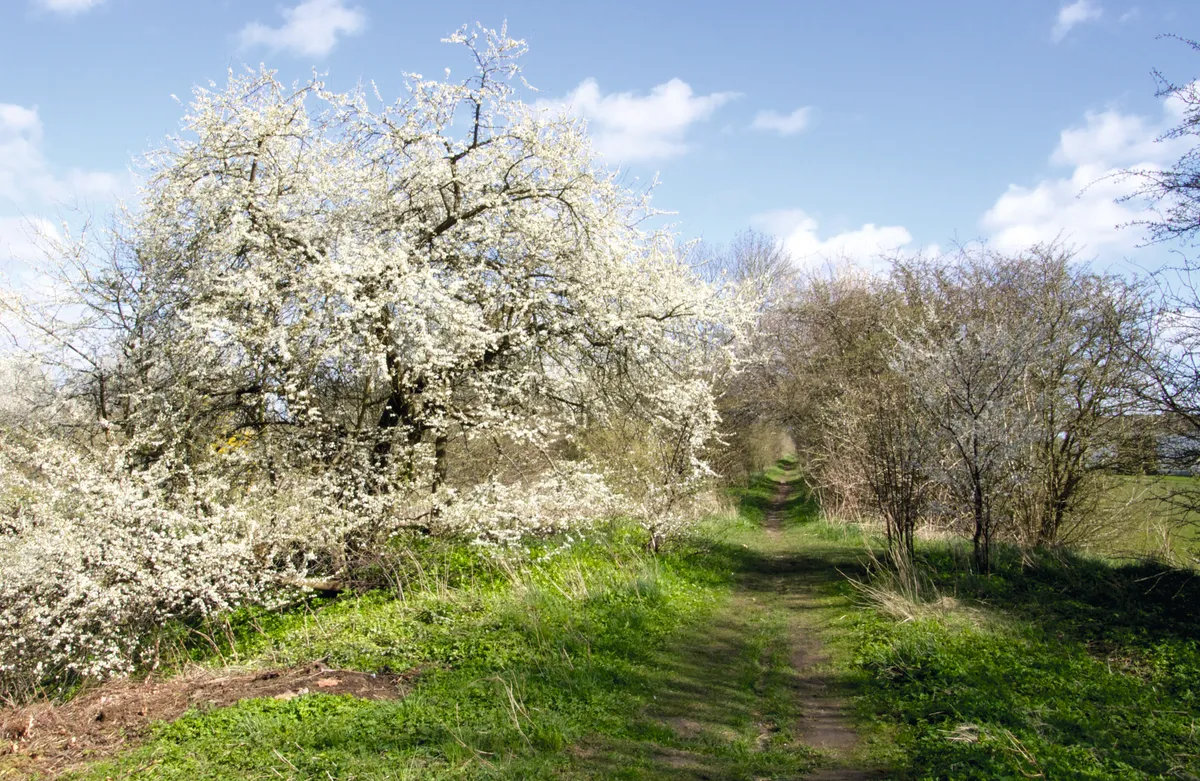
Blackthorn mythology
Perhaps it is the thorns. Mythology views blackthorn with a dubious eye, casting it as a plant of ill omen, witches and doom. “Many slones [sloes], many groans, many [hazel]nuts, many pits [graves]”, goes an old Devon rhyme, perhaps related to the old idea that a bountiful autumn signalled a dire winter. Witches and heretics were said to have been burned on blackthorn pyres, while English witches supposedly pricked people with the thorns.
In Germany, it was known as the wishing thorn, and used instead of hazel as a divining rod; in Irish mythology, winter begins when the Cailleach – the winter goddess – strikes the ground with a blackthorn staff. In Sandwich in Kent, the mayor still carries a blackthorn wand. It could be said that blackthorn is overdue some myths where it is not cast as the villain.
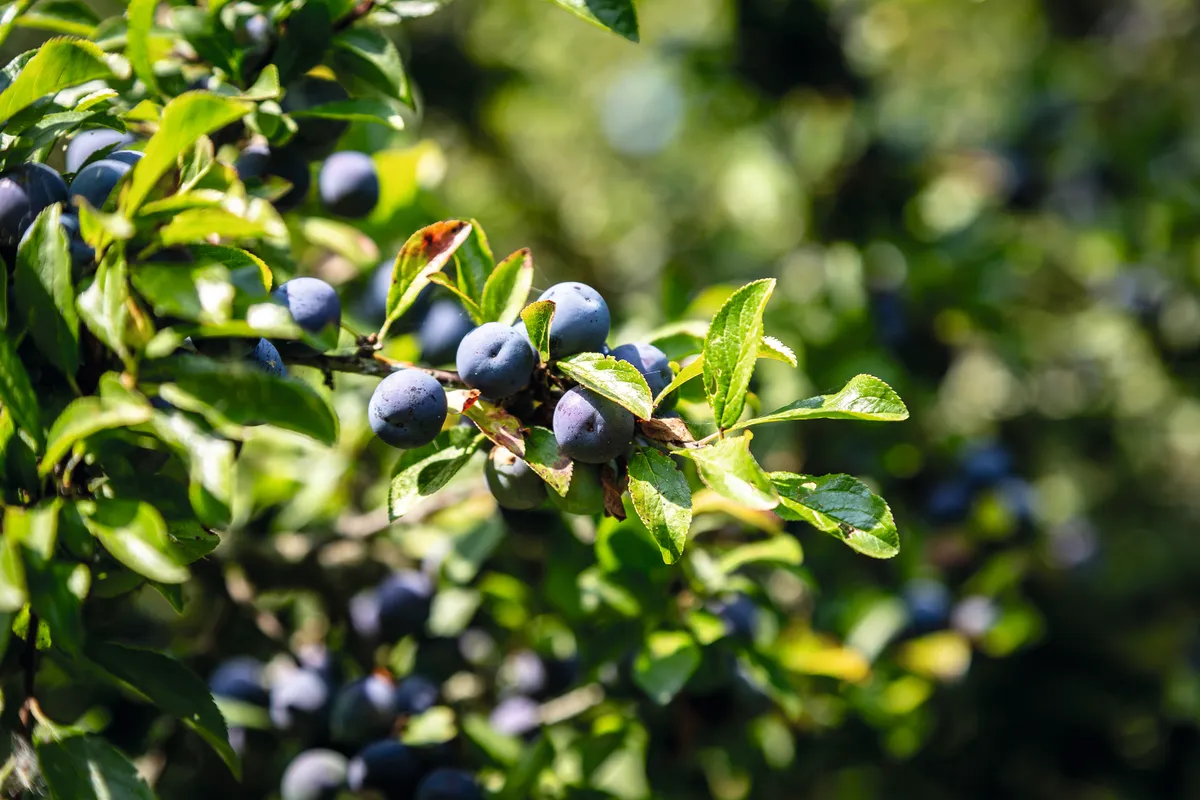
Blackthorn in spring - blossom
Blackthorn, black bark, white blossom: a warm snowfall that wafts sweet almond perfume. Flowers of five petals apiece and long stamens tumbling; so tightly do they cluster that the limbs that bear them are but shadows in the veil, black stems sturdy beneath. In late February, March and April, blackthorn celebrates contrast like an artist working in monochrome.
But who is the performer? Blackthorn lacks the fame awarded to many larger trees, yet quietly embeds itself in folklore, landscapes and all frequently in flesh – its thorns are long thin spears whose tips can survive months inside their victim. Packed with alkaloids, the inflammation can be fierce.
Yet blackthorn defies easy judgment. Its brutality is useful; we have recruited it as a livestock-proof barrier for at least 4,500 years, and pruned twigs unearthed in Cambridgeshire are thought to be evidence of the world’s oldest hedging. Still a mixed blessing, it often wanders via suckers from where we plant it, invading agricultural fields and rare chalk grasslands. It is nicknamed the Mother of Woods, for where it goes, other trees may follow. Beneficial but rebellious, adaptable yet stubborn, blackthorn is an old but unwilling servant.

Perhaps it’s no surprise that such a contrary shrub jumps into spring when almost all its peers remain in bud. The hedgerow, a dormant tangle for so long, is alive. Bees crowd into the dainty white flowers; blackthorn is a vital bridge through the ‘hungry gap’ at the beginning of spring. It was long part of farmers’ calendars, too: “When blackthorn is as white as a sheet, sow your barley, whether it be dry or wet.”
The petals fall as spring warms up, and another shrub steals human attention. Hawthorn is of a distinctly softer character than its neighbour in the hedgerow, with relatively tame thorns and a confetti of blossom that – unlike blackthorn – opens after the plant has come into leaf. Its show lacks blackthorn’s stark absolutes of dark and light, but while hawthorn is honoured with May Day traditions, blackthorn’s own leaves finally emerge. Small, toothed and oval, they were once used to adulterate tea.
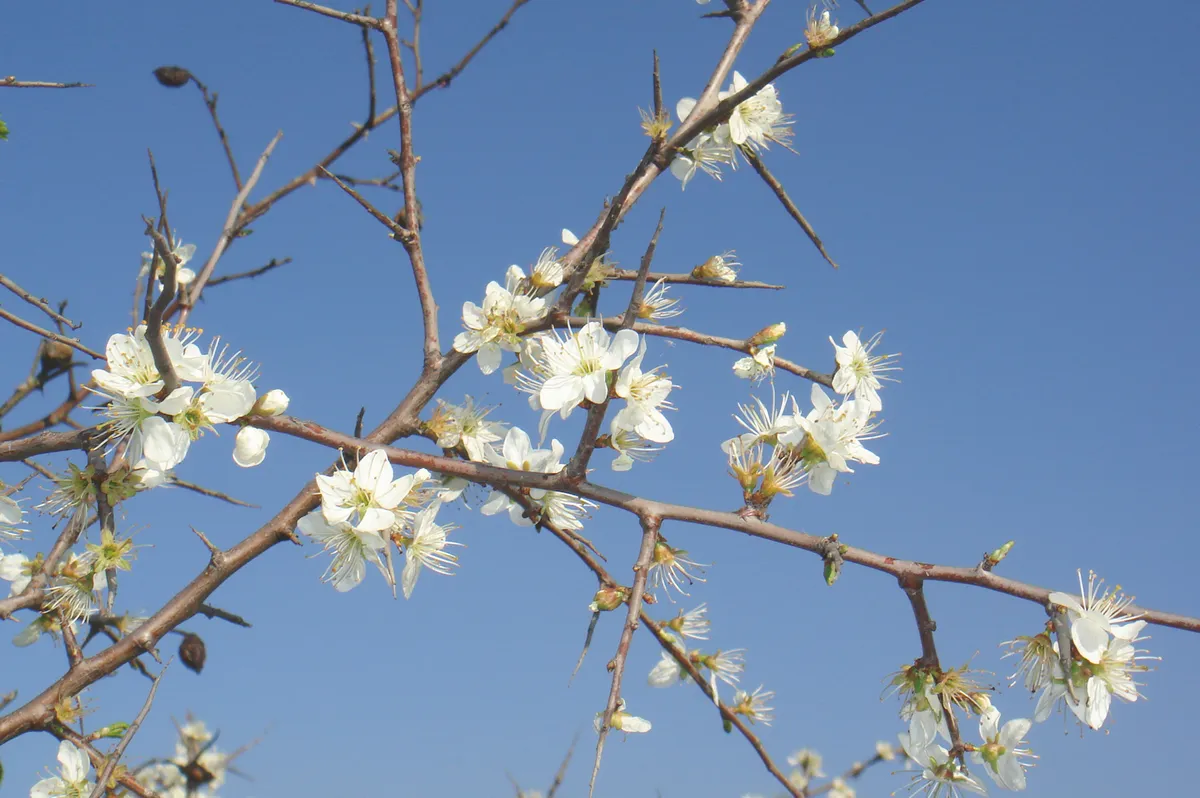
Blackthorn in summer: leaves
Blackthorn becomes a busy place. Finches and warblers nest within its sharp embrace, and if the red-backed shrike eventually reclaims its status as a British breeding bird, we will again see it spearing beetles and other prey on blackthorn’s spikes.
In the meantime, blackthorn has other celebrities. In June, in a few dozen sunny thickets on clay soils in the East Midlands, the endangered black hairstreak butterfly takes briefly to the wing. So elusive it was not identified as a unique species until the 19th century, the black hairstreak is dependent on blackthorn. More widespread across southern Britain but also rare and declining is the brown hairstreak, rich dark wings smudged with tiger-orange. Blackthorn hosts its eggs.
Come nightfall, hazel dormice clamber through the tangle, avoiding dense thickets but often selecting blackthorn for their nests in mixed hedgerows. Moths flutter: the tiny blackthorn argent and the lackey, with its peach stripes, are two amongst many. Other guests stay for a lifetime – dozens of lichens colour blackthorn’s finger-like twigs, 33 species identified in just one study at Dungeness.
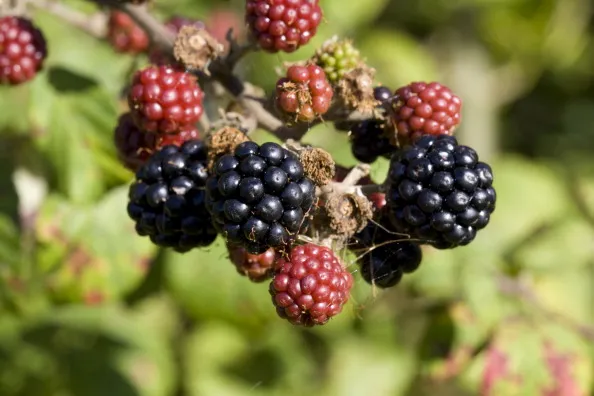
Blackthorn in autumn – sloe berries
As dawn mists rise from rivers and skies turn pale with high autumnal clouds, the end product of all those flowers finally comes on show. Sloes – purplish, clustered, somewhere between a blueberry and a grape in looks, tempt the unwary for a nibble. “They left the mouth dry and sent a curious shiver down one,” records a Victorian writer from Dorset. So astringent are sloes that they were once sucked in the hope of curing gumboils, and fed to cattle with chalk and water to heal flux. Modern science has found its own uses: properties that may fight colon cancer and promote wound healing have been extracted. Sloes are also high in antioxidants, although levels of these vary between plants.
The most familiar use of sloes is culinary. Once the first frost has ruptured the fruit, it is gathered into a jar, mixed with sugar and gin and left corked in a dark room. One old recipe adds penny-royal and valerian, and was called ‘mother’s ruin’. Sloes can also be boiled and turned into jelly, known as kixies jelly on the Isle of Wight. In 19th-century London, unripened sloe juice was used to create fake port wine.
As with all foraging, it is important to leave enough sloes on the plant to support wildlife. Mistle thrushes and fieldfares will exploit them, and drop the stones far from the parent plant.

Blackthorn in winter – bark
As the sloes wither, blackthorn’s year can be said to be done, but in its raw form with no blossom, leaves or fruit, its thin hard bones huddle in the hedgerow to intrigue winter walkers. The bark is smooth and purple-back, and it is easy to imagine how it caught the eye of medieval ink-makers. Soaking blackthorn twigs in rainwater and mixing the paste with cherry-tree gum produces a mixture that was familiar to many scribes.
Blackthorn wood finds its way into our hands to aid our journeys. A walking stick to many, in Ireland it was often used to craft the bata or traditional cudgel. A formidable weapon, it is a final reminder that blackthorn, while helpful in many ways, has a fierce side, and perhaps its struggle with humanity is not entirely unreasonable. It remains abundant, but often in poor health from drastic hedge flailing. By managing blackthorn hedgerows more leniently, we can preserve not only brown hairstreaks and lichens but also the folklore that we have woven around this gloriously spiny, obstinate, richly blossomed shrub.

